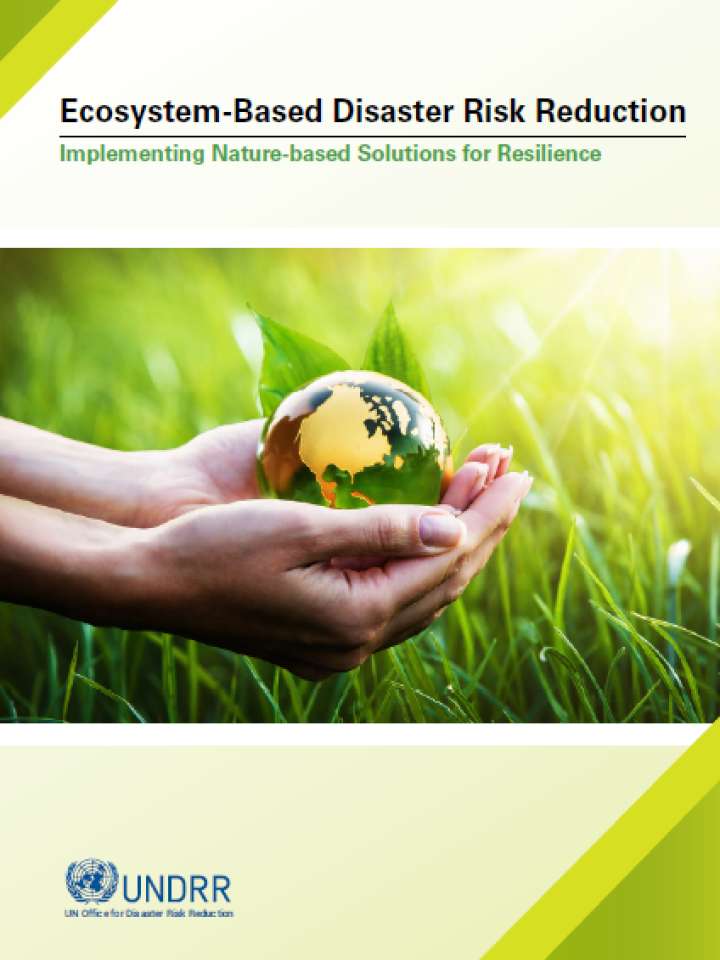Ecosystem-Based Disaster Risk Reduction: Implementing Nature-based Solutions for Resilience
Ecosystems act as a buffer against hazards, preventing disaster and reducing disaster impact on people, critical infrastructure and basic services. Conservation, restoration and the sustainable use and management of land, wetlands, ocean, and other natural resources strengthen disaster and climate risk management. The most vulnerable people in many countries rely on ecosystems for their livelihoods and resilience. Recognizing the interdependency between human well-being, ecosystems, and changing risk patterns, ecosystems also build local socio-economic resilience against disasters by sustaining livelihoods and providing important products to local populations in times of crises.
Conversely, degraded environments are a leading driver of disaster risk. The absence of their services exacerbates disaster impacts and affects recovery efforts and livelihood regeneration in the aftermath of a disaster.
Disaster risk reduction (DRR) and climate change adaptation (CCA) approaches should thus make optimal use of the services provided by ecosystems. While ecosystem management has been reflected in all relevant global frameworks, the translation of such global commitments at the national and local level faces institutional and other governance barriers. Further, the integration of such measures in sectoral development plans, such as in land use and water management, both in rural and urban contexts, remains limited.
The purpose of this policy paper is to increase awareness of the important role of ecosystem-based approaches in reducing disaster risk. It emphasises the central role of ecosystem-based disaster risk reduction (Eco-DRR) in strengthening the coherent implementation of various international frameworks under the 2030 Agenda for Sustainable Development. It further provides suggestions on how to capitalise on the growing evidence-base for strengthening the integration of Eco-DRR and other nature-based solutions (NbS), such as ecosystem-based adaptation (EbA) into disaster risk reduction strategies and national development plans and highlights the usefulness of Eco-DRR in systemic risk management, using examples and good practices from the Asia-Pacific region and other parts of the world.
An inclusive, “all-of-government” and “whole-of-society” approach towards the development of ecosystem-based approaches to DRR ensure their legitimacy, ownership and buy-in by core national actors in DRR and development and their smooth adoption and sustainable implementation at the country level. The intended target audience of this document are policymakers, planners and practitioners in DRR, CCA, sustainable development, and natural resource management:
- National-level policymakers leading the development and coordination of the national disaster risk reduction strategy.
- Government officials, including those from the sectoral and line ministries, at national and local levels, who implement DRR measures through various means and at various levels.
- National and local disaster risk reduction practitioners from the development sector and non-state stakeholders who contribute to the process of developing and implementing the national DRR strategy and support its alignment with local DRR strategies / action plans.
- Disaster risk management and climate change practitioners at the regional and global level who will support the integration of DRR and climate change adaptation in support of the achievement of the SDGs by 2030.
- Technical experts from all sectors with a wide range of thematic specializations (e.g. multi-hazard risk assessments, critical infrastructure, climate change adaptation, agriculture resilience, land-use planning, social vulnerability, insurance and financial risk transfer mechanisms, emergency preparedness, gender, national statistics and results-based management, etc.) who are contributing their expertise to ensure the development of a comprehensive DRR strategy that effectively supports risk-informed development.
- Regional inter-governmental organizations who support their member states in the development of a national DRR strategy aligned with a sub-regional DRR policy, normative framework and roadmap, as well as regional DRR strategies / frameworks adopted at regional platforms for DRR.
The document forms a key knowledge and evidence base for the Words-into-Action guideline on Nature-based Solutions for Disaster Risk Reduction.
Explore further
